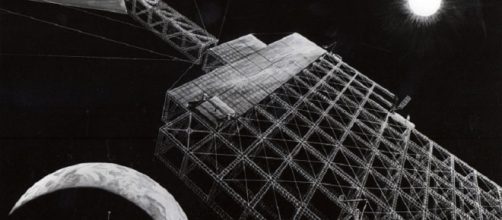The most immediate goal for China’s crewed Space program is the construction of a small space station in low Earth orbit, weighing about 60 tons, more resembling the Soviet-era Mir than the current International Space Station. However, Lt Gen. Zhang Yulin, deputy chief of the armament development department of the Central Military Commission, suggested that China would next begin to exploit Earth-Moon space for industrial development. The goal would be the construction of space-based solar power satellites that would beam energy back to Earth.
The concept of space solar energy has been around since the early 1970s.
The idea is to build an enormous solar collector in space, beyond where the atmosphere screens out a lot of sunlight, then convert the power into a microwave beam that would transmit it to collectors on Earth that would feed it into the power grid. Unlike ground-based solar power, a space-based solar power collector would be exposed to the sun almost 24 hours a day.
The major drawback to building a space-based solar energy satellite consists of the high cost of shipping materials to a geosynchronous orbit where said satellite would be located. The International Space Station, which took over ten years to build, weighs 400 metric tons. A space-based solar power station might weigh as much as 10,000 metric tons.
The solution to the cost of building a space solar power plant would be to use materials mined from the moon. Robots would extract building materials and then ship them to the construction site in geosynchronous orbit where 3D printers would create components, and robots would assemble the parts together.
The Chinese are keen to develop clean, renewable energy to replace its system of coal-fired plants.
Coal power has caused a tremendous pollution problem that has shrouded a number of Chinese cities in blankets of smog, creating a health and environmental hazard. China is looking to space to solve its energy needs. Besides developing space-based solar power, the Chinese are looking at the possibility of mining Helium 3, an isotope not found on Earth, that could be used to power future fusion power plants.

